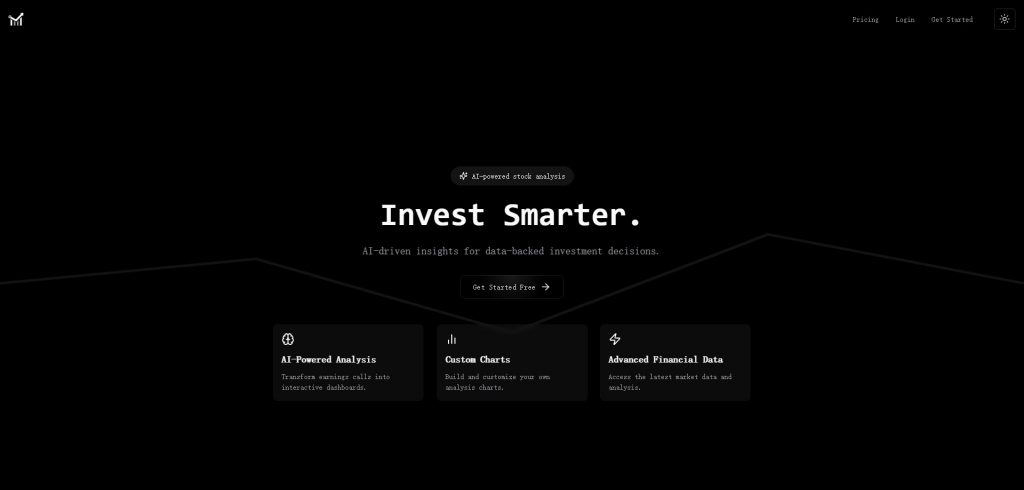20 Handy Ideas For Picking Ai Investing
20 Handy Ideas For Picking Ai Investing
Blog Article
Top 10 Tips To Optimize Computational Resources For Ai Stock Trading From copyright To Penny
Optimizing computational resources is vital for AI stock trades, particularly in dealing with the complexities of penny shares as well as the volatility of copyright markets. Here are the 10 best ways to maximize your computational power.
1. Cloud Computing to Scale Up
Utilize cloud-based platforms like Amazon Web Services or Microsoft Azure to expand your computing resources to suit your needs.
Why: Cloud services offer flexibility to scale up or down based on the amount of trades, data processing needs, and the complexity of models, particularly when trading on unstable markets such as copyright.
2. Pick high performance hardware to get Real Time Processing
TIP: Consider investing in high-performance hardware, for instance, Graphics Processing Units (GPUs) and Tensor Processing Units (TPUs), which are ideal for running AI models effectively.
Why GPUs/TPUs greatly speed up modeling and real-time data processing. This is essential for quick decision-making on high-speed markets like penny stocks or copyright.
3. Access speed and storage of data optimized
Tip: Consider using efficient storage solutions like SSDs or cloud-based services for speedy retrieval of data.
The reason: Rapid access to historic data as well as real-time market information is essential to make timely AI-driven decisions.
4. Use Parallel Processing for AI Models
Tip: Use techniques of parallel processing to execute multiple tasks at the same time. For instance, you can analyze different markets at the same time.
What is the reason? Parallel processing speeds up the analysis of data and builds models, especially for large datasets from different sources.
5. Prioritize edge computing for trading at low-latency
Make use of edge computing to run calculations that are nearer to data sources (e.g. data centers or exchanges).
Edge computing reduces latency which is vital for high-frequency markets (HFT) as well as copyright markets. Milliseconds are crucial.
6. Improve efficiency of algorithm
Tip A tip: Fine-tune AI algorithms to improve efficiency both in training and operation. Techniques like pruning can be useful.
Why: Models optimised for efficiency use fewer computing power and also maintain their performance. This means that they need less hardware to execute trades which speeds up the execution of trades.
7. Use Asynchronous Data Processing
Tips: Make use of asynchronous processing, where the AI system handles information in isolation of other tasks. This allows for instantaneous trading and data analysis without delays.
The reason is that this method reduces downtime and increases system throughput, particularly important in fast-moving markets like copyright.
8. Control Resource Allocation Dynamically
Tips: Use management tools for resource allocation that automatically assign computing power based on the demands (e.g. during the hours of market or during large celebrations).
The reason: Dynamic Resource Allocation makes sure that AI models are running efficiently, without overloading the systems. This helps reduce downtime during times of high trading.
9. Make use of light models for real-time Trading
Tip: Opt for lightweight machine learning models that can take quick decisions based upon real-time data without needing significant computational resources.
Reason: Trading in real-time particularly with penny stocks and copyright, requires quick decision-making, not complicated models as the market's environment can be volatile.
10. Monitor and Optimize Computational Costs
Monitor the AI model's computational costs and optimize them to maximize cost-effectiveness. You can choose the best pricing plan, such as reserved instances or spot instances according to your needs.
Why: Efficient resource use will ensure that you don't overspend on computational power, which is crucial when trading on thin margins in penny stocks or the volatile copyright markets.
Bonus: Use Model Compression Techniques
To minimize the complexity and size it is possible to use techniques for compression of models like quantization (quantification), distillation (knowledge transfer) or even knowledge transfer.
Why: Compressed model maintains performance while being resource-efficient. This makes them perfect for real-time trading where computational power is not sufficient.
Implementing these strategies will allow you to maximize your computational resources to create AI-driven platforms. It will guarantee that your trading strategies are efficient and cost-effective, regardless of whether you trade the penny stock market or copyright. Check out the most popular best stock analysis website tips for blog advice including ai for trading stocks, ai stock analysis, ai stock price prediction, ai stock picker, ai day trading, ai investing app, ai sports betting, ai stock prediction, best ai trading bot, ai trading app and more. 
Top 10 Tips On Making Use Of Ai Tools For Ai Prediction Of Stock Prices And Investment
The use of backtesting tools is critical to improving AI stock selectors. Backtesting helps test how an AI-driven strategy performed under previous market conditions, giving insights into its effectiveness. Backtesting is a fantastic tool for stock pickers using AI, investment predictions and other instruments. Here are ten tips to help you get the most benefit from backtesting.
1. Utilize High-Quality Historical Data
Tip. Make sure you are using accurate and complete historical information, such as stock prices, trading volumes and reports on earnings, dividends, and other financial indicators.
The reason: Quality data will ensure that backtesting results are based on realistic market conditions. Incomplete or incorrect data can cause false backtests, and affect the accuracy and reliability of your strategy.
2. Add Slippage and Realistic Trading costs
Backtesting is a great way to simulate realistic trading costs such as transaction costs commissions, slippage, and the impact of market fluctuations.
The reason: Failure to account for slippage or trading costs may overstate the return potential of AI. Incorporating these factors will ensure that the results of your backtest are close to actual trading scenarios.
3. Tests to test different market conditions
Tips: Test your AI stock picker on multiple market conditions, including bear markets, bull markets, and times with high volatility (e.g. financial crises or market corrections).
What's the reason? AI model performance could be different in different markets. Examining your strategy in various conditions will ensure that you've got a robust strategy and is able to adapt to changing market conditions.
4. Test with Walk-Forward
Tips: Implement walk-forward testing that involves testing the model on a rolling time-span of historical data and then confirming its performance using out-of-sample data.
What is the reason? Walk-forward tests help assess the predictive power of AI models on unseen data which makes it a more reliable test of the performance in real-time as compared with static backtesting.
5. Ensure Proper Overfitting Prevention
Tips: To prevent overfitting, try testing the model with different times. Be sure it doesn't create the existence of anomalies or noises from previous data.
The reason is that overfitting happens when the model is too closely to historical data. As a result, it's less successful at predicting market movement in the near future. A well balanced model will generalize in different market situations.
6. Optimize Parameters During Backtesting
Use backtesting software to optimize parameters such as stop-loss thresholds, moving averages or the size of your position by making adjustments incrementally.
Why: Optimizing the parameters can improve AI model performance. As mentioned previously it's essential to make sure that the optimization doesn't result in an overfitting.
7. Drawdown Analysis and Risk Management Integrate them
Tips: Consider risk control techniques like stop losses Risk to reward ratios, and positions sizing when backtesting to test the strategy's resiliency against drawdowns that are large.
How do you know? Effective risk management is key to long-term success. By simulating how your AI model handles risk, you are able to spot potential vulnerabilities and adjust the strategy to ensure better return-on-risk.
8. Analyze key metrics beyond returns
It is crucial to concentrate on other performance indicators other than the simple return. They include Sharpe Ratio (SRR), maximum drawdown ratio, win/loss percent, and volatility.
Why: These metrics aid in understanding your AI strategy's risk-adjusted performance. If you solely focus on the returns, you might overlook periods that are high in volatility or risk.
9. Simulation of various asset classes and strategies
Tip: Test the AI model with different asset classes (e.g. stocks, ETFs and cryptocurrencies) as well as various investing strategies (e.g. momentum, mean-reversion or value investing).
The reason: Diversifying your backtest to include different types of assets will allow you to test the AI's resiliency. You can also ensure that it's compatible with various types of investment and markets even risky assets such as copyright.
10. Make sure you regularly review your Backtesting Method, and then refine it.
Tip: Update your backtesting framework regularly with the most recent market data to ensure it is updated to reflect new AI features and changing market conditions.
Why is that markets are always changing and your backtesting needs to be, too. Regular updates are essential to make sure that your AI model and results from backtesting remain relevant even as the market shifts.
Bonus Monte Carlo Simulations can be beneficial for risk assessment
Tips: Monte Carlo simulations can be used to model different outcomes. Perform several simulations using various input scenarios.
What's the reason: Monte Carlo simulators provide a better understanding of the risk involved in volatile markets like copyright.
Follow these tips to evaluate and optimize your AI Stock Picker. A thorough backtesting process ensures that the investment strategies based on AI are reliable, stable and adaptable, which will help you make more informed decisions in dynamic and volatile markets. Have a look at the best ai financial advisor blog for site recommendations including ai trading software, ai trading, best copyright prediction site, ai sports betting, ai trading bot, free ai tool for stock market india, ai sports betting, incite, ai investing app, ai trading software and more.